One of the advantages of direct mail is the vast amount of real estate it provides. There’s room for content that entertains, inspires, educates and builds brand loyalty. Yet it’s important to keep in mind that when consumers flip through direct mail pieces, they are not looking for entertainment. They are looking for products that can fulfill their needs and improve their lives.
Branding content can’t be worn, used to furnish a home, gifted… or make the cash register ring right away. To do so, showing a range of products across categories and price points must take precedence over content. In direct mail, merch comes first.
Following are examples of different types of content and product coexisting effectively in direct mail.
1. Founder Story
Consumers are interested in the personalities behind a brand and why the brand was conceived but the story should be less about “me” the founder and more about what the brand and product will do for “you” the consumer.
Made In
• Founder story is broken into small, edible chunks of copy
• The story differentiates Made In cookware from other brands’
• Imagery includes product
• Spread includes reviews

2. Emotion-Evoking Opener
Opening spreads that use images and words to reflect consumers’ feelings can create a powerful positive connection with consumers and can lead to them literally seeing themselves in your product – with a purchase.
Girlfriend Collective
• The copy, a surprise twist on a New Year’s resolution concept, is positive and affirming
• The imagery shows product on happy models
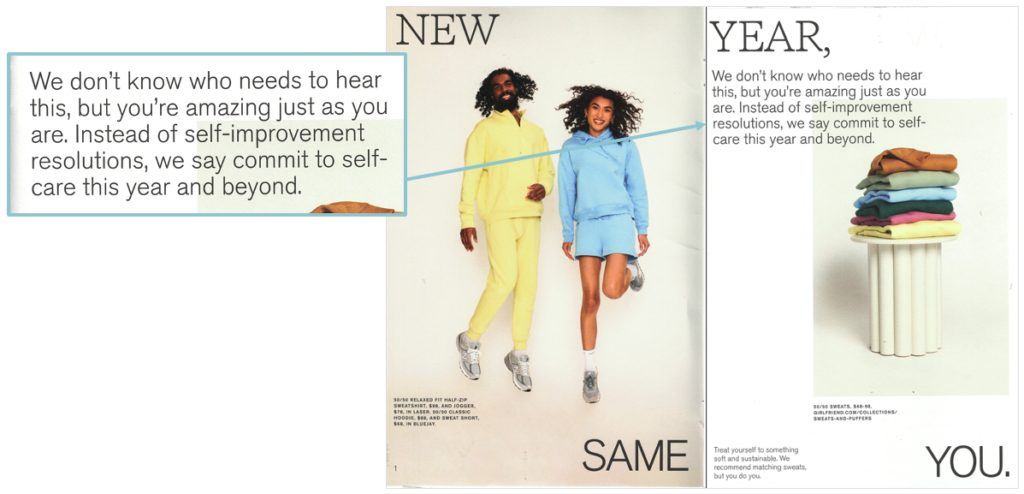
3. Instructional Content
Instructional content drives sales by showing the consumer more and different ways to use the product. As a how-to reference, instructional content can also give a direct mail piece a longer shelf life.
Annie Selke
• Annie Selke describes different types of rugs to help consumers select the best product for their needs
• Image is large
• Copy points are short

4. UGC Content
UGC provides social proof that others have had a positive experience with your brand. While often not up to production standards of professionally produced content, UGC is 100% authentic and it cost nothing to produce.
Monica + Andy
• Images are adorable, show age and racial diversity and feature the brands’ products
• Solicits social engagement
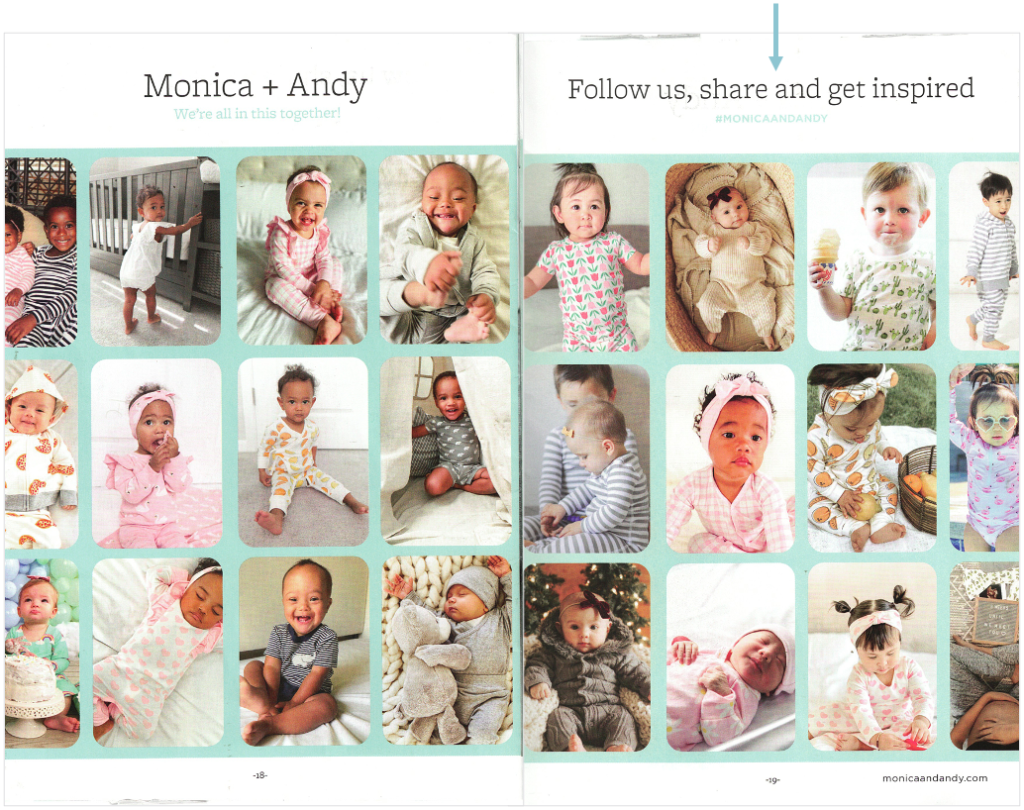
5. Construction Content
Content that shows and tells how products are made and what they are made of distinguishes the products from competitors’ and can help justify steep price points.
Shinola
• Craftsmanship content is included on a spread that also includes product
• The “making” images are colorful and simple
• Copy is short
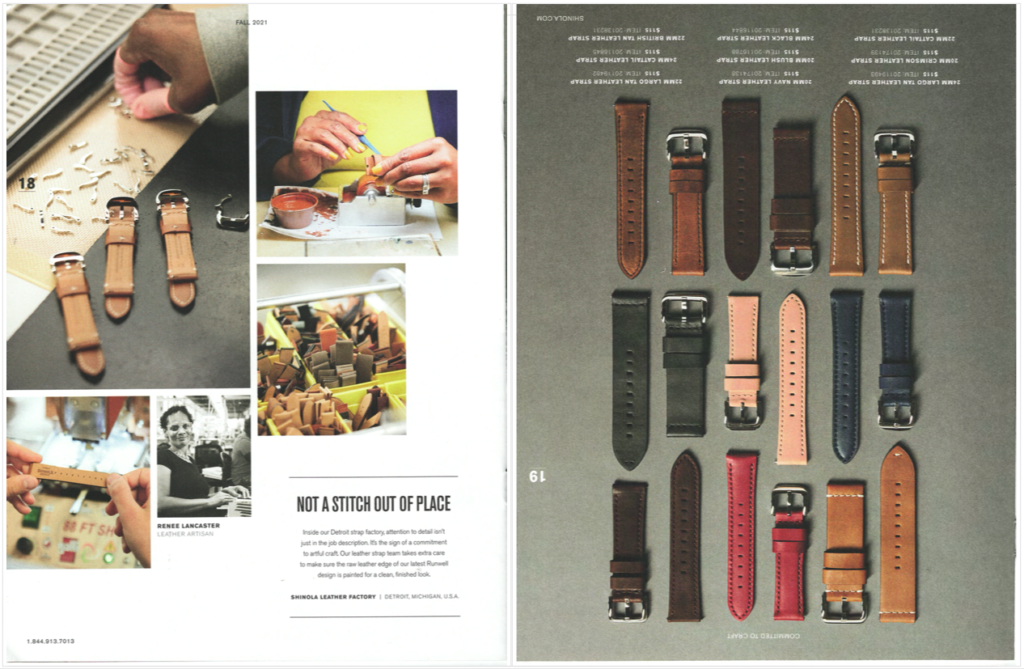
6. Influencer Content
Influencers can be celebrities or micro influencers, those with less than 100,000 followers. Their involvement with brands can be as minimal as providing a testimonial or as extensive as being a collaborator on a capsule collection. Such partnerships are a win-win for the brand and influencer as both get exposure to a new audience.
OluKai
• OluKai partnered with a golf pro for the launch of a golf shoe line
• Includes influencer image wearing the shoes and a quote
• Includes selling product

7. Reviews and Endorsements
Social proof is powerful! Reviews and endorsements demonstrate credibility and lend a sense of authority that lowers a barrier to buying.
Apiece Apart
• Endorsement is from a publication known to the customer demo
• Copy is short
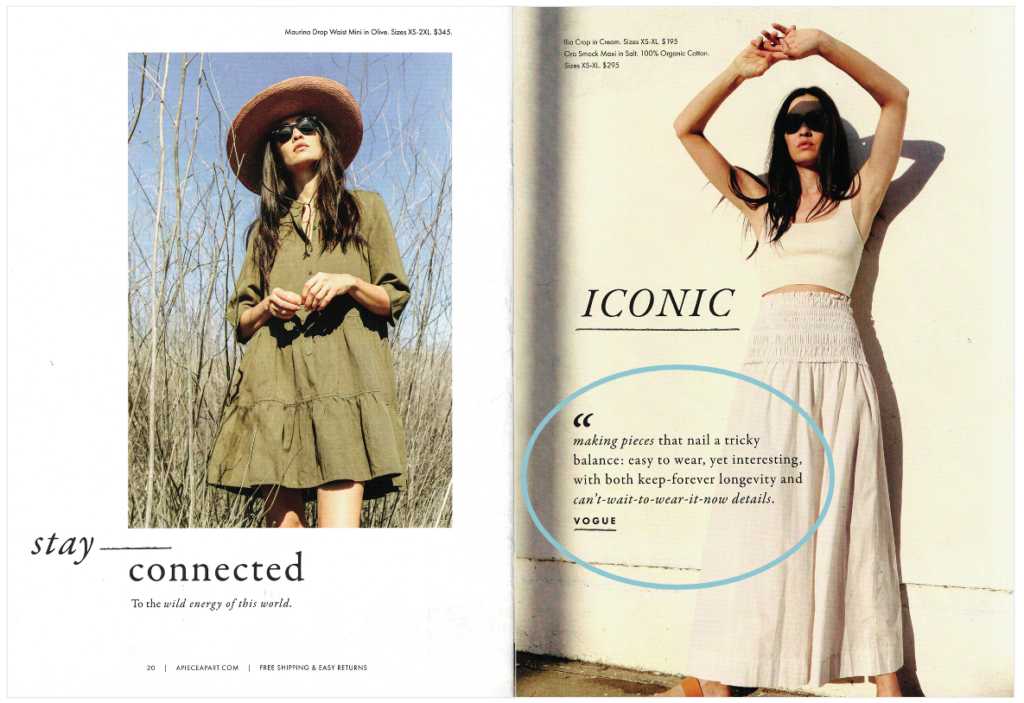
8. Mission-Driven Content
Many of today’s consumers are embracing social causes. The cause(s) a brand embraces factor in purchase decisions for this consumer set. Communicating mission commitments and charity partnerships is a worthy use of some direct mail real estate.
Samuel Hubbard
• Explains dedication to a healthier planet with imagery and copy
• Includes product
• Includes a review

9. Enthusiast Content
There is only one category of direct mail for which it’s appropriate to include big pieces of non-selling content such as articles: high page-count catalogs that go to enthusiasts. Prospects will not take the time to engage in content from a brand they do not know and trust yet. Showing the prospects irresistible product that turns them into customers is a more productive use of space.
King Arthur Flour
• King Arthur Flour catalogs are targeted to consumers with proven affinity for cooking and baking. These consumers are likely to read and perhaps even save the recipe
• The recipe shares spread space with product needed to make the bread

A Note About Offsetting Content Space
In 32+ page catalogs, it’s not uncommon to see an entire spread or two devoted to brand stories that sell zero products, seemingly breaking the Merch is First rule. But further flipping through these catalogs reveals other spreads that are higher density, thus offsetting the low and no-density presentation. Examples follow.
Aether
• Aether’s editorial spread is selling attitude and adventure
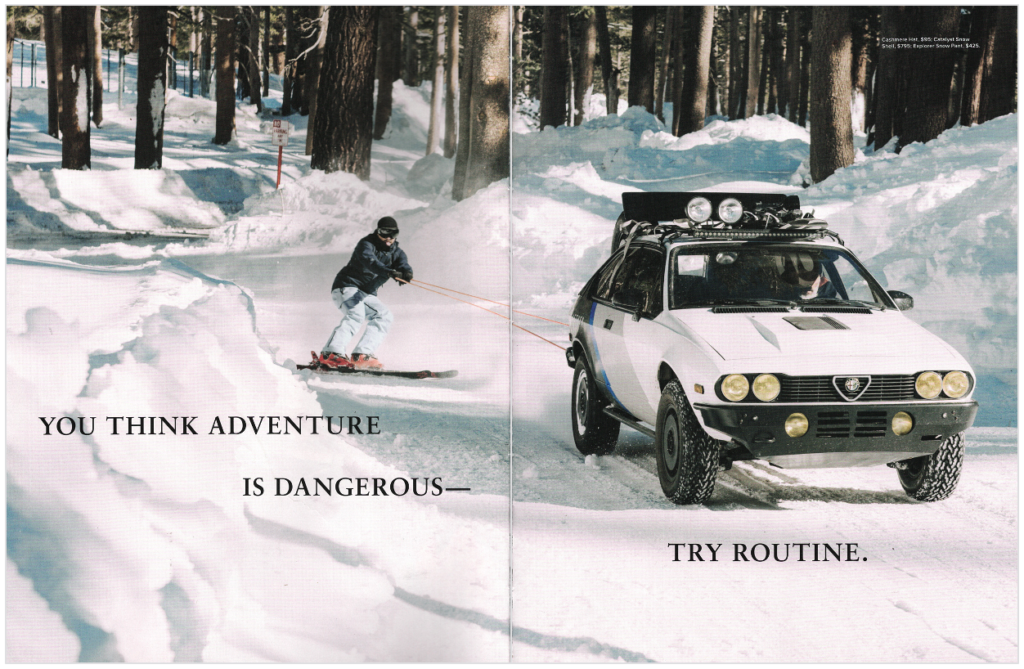
• A few pages later, a dense flatlay spread makes up for the product-lite editorial spread
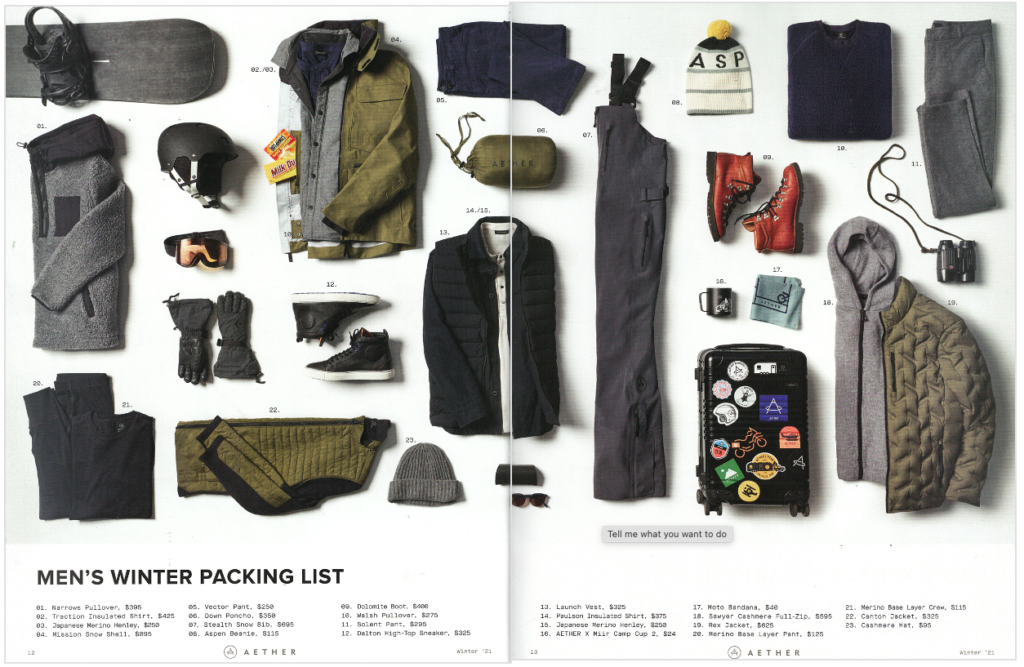
Backcountry
• Backcountry’s editorial spread inspires with the beauty of nature
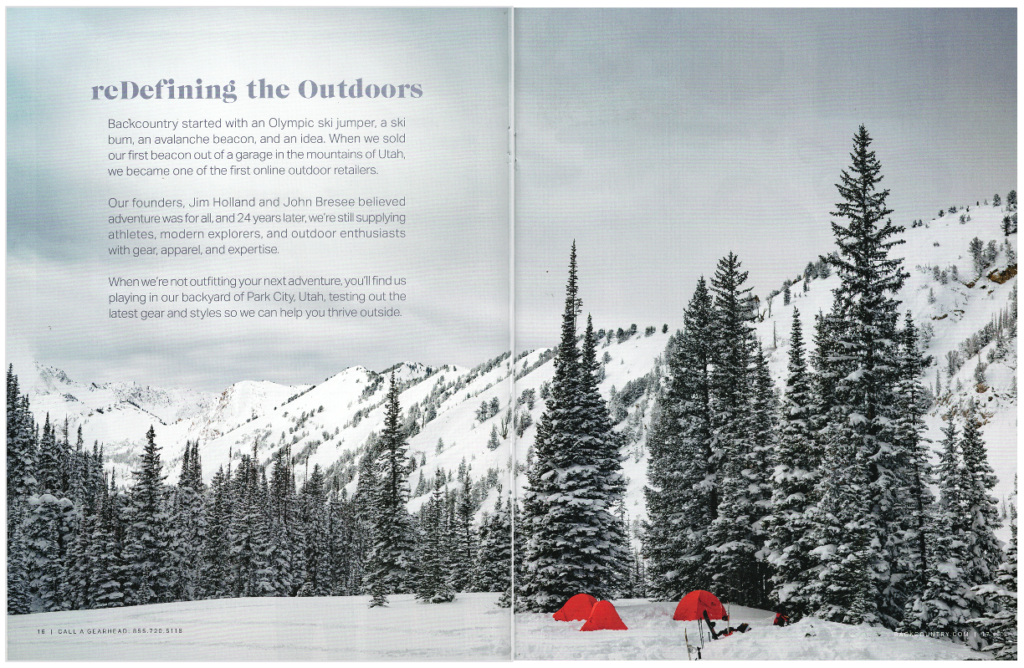
• Other spreads in the book are dense with product like the example below

Care to see more effective examples of content in direct mail? Contact us for access to our comprehensive Guidelines for Including Non-Selling Content in Direct Mail deck.